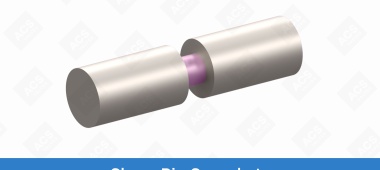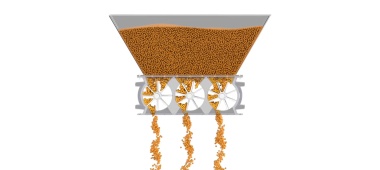I missed the DHA deadline! What happens now?

The deadline for dust hazard analyses is up! As outlined by NFPA 652, they were due on September 7, 2020 for all facilities that generate combustible dust.
The pandemic may have made it difficult to meet the deadline. Maybe you never started the DHA, or maybe you began the process before the deadline but were not able to finish it in time. It’s still important to finish your DHA!
If you only take one thing away from this blog, it should be this: document, document, document. If you’re running late on your DHA, a thoroughly documented process will show code enforcers you’re making a good faith effort to keep your facility safe.
Wait, what is a DHA?
If you’re missing some background on dust hazard analyses, we have a handy resource page you can read to get more details. To sum it up briefly, a DHA systematically reviews your manufacturing process to identify hazards for fires and deflagrations (i.e. flash fires and explosions), which then sets you up to formulate a risk mitigation plan.
Who is responsible for checking on me?
You may have noticed that the NFPA police did not come knocking at your door on September 8. That’s because NFPA does not conduct audits – that’s up to the code enforcer in your local jurisdiction. Potential auditors could include a state or federal OSHA official, a fire marshal, a building inspector or your insurance company.
It’s possible they never come knocking. If a complaint is made, however, one of those auditors could come in and discover combustible dust hazards, at which point they will ask you for the facility’s DHA.
So, will I get fined without my DHA?
Without your DHA, it is possible that you may face fines or penalties for noncompliance. The best way to avoid that is to start the process right away, and document every single step.
It’s not bulletproof, but it’s much better than doing nothing. Documentation will show the auditor that you are making every effort to complete your DHA and keep the plant safe.
How to do your DHA now that the deadline has passed
Again, a DHA is all about identifying fire or deflagration hazards in your plant. You are then required by NFPA 652 to create an actionable plan to mitigate the risks you uncover.
If you’re unsure how to conduct the DHA, it may be best to find an outside consultant who can guide you through it and help expedite the process. Here are some quick tips:
- Your DHA team can be made up of outside consultants, but if it’s an internal team, make sure it includes at least one person with process flow expertise and familiarity with DHAs.
- Create a DHA schedule. Book meetings and walkthroughs in advance, and plot out every step of the process from start to finish.
- Do as much as you can remotely via a video call application such as WebEx, Zoom, Microsoft Teams or Skype. You can even do a virtual plant walkthrough by having one person record it on a bodycam or phone camera.
- If COVID has created out-of-the-ordinary conditions in your facility – for example, if it’s cleaner or dirtier than usual – make a note of this.
- Collect as much information as you can in advance, including your material properties, facility and equipment layout, process flow diagrams, standard operating procedures and so on.
- There are multiple methodologies for DHAs, but in this case, experts recommend a “What-if/Checklist” approach. This involves running through several scenarios to envision what hazards could potentially arise at different points in your process.
- Read Chapter 9 of NFPA 652, titled “Hazard Management: Mitigation and Prevention” for help in putting together your checklist.
- Once you’ve done the DHA, don’t forget to act on it. That means planning for any changes in your process, materials, administrative controls, facility designs, equipment, housekeeping procedures, or anything that will help remedy the hazards you found in the DHA.
As for which parts you should document: all of it, ideally! That way you can present whatever you have so far, whether it’s your meeting schedule, DHA team, instrumentation and process flow diagrams, checklists, plant walkthrough videos or plans for upcoming improvements in the facility.
Then the code enforcer or auditor can review what you have so far and decide whether you have made an acceptable effort to improve conditions in the plant.
Good luck finishing your DHAs
Oh, and don’t forget to do it all over again in 2025. The current regulation calls for a new dust hazard assessment every five years.
The experts at ACS Valves know a lot about conveying systems, but rotary valves are our strong suit. Contact us for help in selecting an NFPA-compliant valve in selecting an NFPA-compliant valve that will act as an isolation device in the event of a fire or deflagration.
Categories: NFPA , OSHA , Safety
Go ahead, make your valve
Put your own spin on our customizable valves to get the best valve for your application, material and industry.

We have a series of items available for quick shipment
Items include: Pressure blower packages, MD Series, S-Pellet Series, Diverter Valves, Flex Tip Series, Screw Conveyors

How to: Check rotor-to-housing tolerances
Keep your rotary airlock valve compliant with NFPA guidelines and maintain strong performance by checking your rotor-to-housing clearances regularly.

Newsletter
Stay informed on all things ACSWe’ll keep you up-to-date on the latest valve how-tos, handy tips, and news from ACS. It’s totally free and you can opt out at any time.







